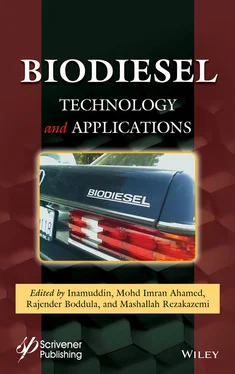Table 1.6 Some other experiments using recombinant whole catalyst without immobilization.
| Expressing lipase source |
Substrate |
Acyl acceptor |
Yield |
Reference |
| Serratia marcescens YXJ-1002 |
Waste grease |
Methanol |
97% |
[183] |
| Rhizomucor miehei and Penicillium cyclopium |
Soybean oil |
Methanol |
>95% |
[184] |
| Fusarium heterosporum |
Soybean oil |
Methanol |
95% |
[185] |
| Rhizomucor miehei (RML) |
Soybean oil |
Methanol |
83.14% |
[186] |
| Microalgal oil |
Methanol |
>90% |
[187] |
| Thermomyces lanuginosus (Tll) |
Waste cooking oil |
Methanol |
82% |
[176] |
| Rhizopus oryzae IFO4697 |
Soybean oil |
Methanol |
71% |
[188] |
Table 1.7 Investigation of immobilized whole-cell biocatalysts to produce biodiesel.
| Lipase cell factory |
Immobilized on |
Substrate |
Acyl acceptor |
Yield |
Reference |
| Rhizopus oryzae cells |
Biomass support particles |
Soybean oil |
Methanol |
70%–83% |
[197] |
| Mucor circinelloides |
Poly-Urethane Foam |
Sardine ( Sardinella lemuru ) oil |
Methanol |
NA |
[198] |
| Mucor circinelloides URM 4182 |
polyurethane support |
Babassu oil |
Ethanol |
98.1% |
[199] |
| Rhizopus oryzae IFO4697 |
biomass support particles |
Oleic acid |
Methanol |
90% |
[200] |
| Soybean oil |
Methanol |
72% |
| Rhizopus oryzae (ROL) |
biomass support particles |
Jatropha curcas oil |
Methanol |
90% |
[201] |
| Soybean oil |
Methanol |
90% |
[202] |
| Rhizopus oryzae 262 |
Calcium alginate beads |
waste cooking oil (sunflower oil) |
Methanol |
84% |
[203] |
| Rhizopus oryzae ATCC 34612 |
biomass support particles |
Cottonseed oil |
Methanol |
27.9% |
[204] |
| Pseudomonas fluorescens MTCC 103 |
Sodium alginate |
Jatropha oil |
Methanol |
72% |
[205] |
| Aspergillus niger |
Biomass support particles |
Palm oil |
Methanol |
>90% |
[104] |
1.11 Recent Strategies to Improve Biodiesel Production
1.11.1 Combination of Lipases
Lipases from different sources or organisms possess different properties. Just like no ideal gas really exists, similarly, there is no ideal lipase that will be considered as absolutely perfect. Just one lipase cannot have all properties that are ideally required for optimal biodiesel production. But researchers are trying to find the best among the lot. Novel sources provide different features of lipase that can be good for biodiesel production. Some lipases are good at tolerating high temperatures, some may work at low temperature, some provide a good temperature range, some may have good catalytic activity, and some may have good hydrolytic activity. Raw material or substrate that is used for biodiesel production is very diverse in nature. Feedstock is mainly comprised of FFA, triglycerides, diglycerides, or monoglycerides, so it is difficult for one lipase to tackle all these things with best possibility. Likewise, every lipase has different alcohol inhibition capacity to tolerate it. So, all in all, these things make it very difficult for one lipase to be perfectly suitable to give best results. So, researchers have come with an idea to use combination of enzymes/lipases. One may be best at providing specific feature and other may be good at giving another specific feature and so on. This way combination of enzymes will provide many features that will be good for biodiesel production. A lot of combination of enzymes have been studied recently for biodiesel production. According to Li et al . [206], combined use of Lipozyme TL IM and Novozym 435 lipase resulted in 96.38% conversion of stilingia oil into FAME. Reaction conditions were methanol-to-oil molar ratio (6.1:4), temperature 20°C along with the use of co-solvent consisting of acetonitrile and t-butanol. At these conditions even after 30 cycles, there was no loss in lipase activity. Similarly, many investigations have been done and some of them are given in Table 1.8.
Another way of using compound lipases is cloning and expression of two or more different lipase coding genes from different organism in a host organism. But cloning and effective expression of lipases from host organism is a difficult and cumbersome process, but it has also provided better results. For example, according to Guan et al . [184], Pichia pestoris was selected as a host organism to express two lipase coding genes cloned from two different organisms, one of them was R. miehei (source of 1,3- specific lipase) and the other was Penicillium cyclopium (source of non-specific lipase). Extract containing these two lipases when applied for biodiesel production to transesterify soybean oil at 30°C with 4:1 alcohol-to-oil molar ratio resulted in 99.7% yield after 24 h. In another research, a special recombinant Aspergillus oryzae whole-cell biocatalyst was created that used to co-express two different lipases genes, one of these two lipases was derived from Fusarium heterosporum (FHL) and the other one was mono and diacyl glycerol lipase B. Use of that whole-cell recombinant Aspergillus oryzae biocatalyst resulted in 98% methyl ester yield [179]. According to Yan et al . [216], recombinant Pichia pestoris was developed that displayed two lipases, i.e., T. lanuginosus lipase (TLL) and C. antarctica lipase B (CALB) from different sources on its surface. This whole-cell biocatalyst co-expressing both lipases produced 95.4% biodiesel yield under optimum conditions. Apart from ILs advantages, there is a problem with the biodiesel recovery because during continuous biodiesel removal reaction moves backward and affects the resultant yield. So, to avoid this problem SC-CO 2has been suggested along with ILs. SC-CO 2is very effective in recovering biodiesel because ester molecules have good solubility in it. IL-SC-CO 2combination not only provides easy recovery but also prevent glycerol inhibition effect. SC-CO 2saturated with (substrate) oil is introduced into the reaction system and this creates two phases because of immiscibility in each other. SC-CO 2can diffuse through IL (ionic liquid) phase bringing substrate with it, reaches the enzyme active site and makes the reaction easily possible. After enzyme activity when biodiesel is formed, biodiesel esters become soluble in SC-CO 2phase, So, in this way, biodiesel becomes separate from ILs. Glycerol (by-product of the reaction) does not dissolve into SC-CO 2so it makes another separate layer and then glycerol can be easily taken out in pure form. SC-CO 2containing biodiesel is then processed to recover bio-diesel from it by depressurization [217, 218]. In this way, two phase system due to IL-SC-CO 2combination enable to recover biodiesel in good quality. IL-SC-CO 2combination system was first used to extract naphthalene using [bmim] [PF6] as IL [219]. Enzymatic biodiesel was produced with IL-SC-CO 2system by transesterification of triolein using Novozyme 435 as biocatalyst and methanol as acyl acceptor. In IL-SC-CO 2system, 12 different ILs were used and there were two different temperature conditions, i.e., 60°C and 85°C. After 6 h, the resultant biodiesel yield obtained was more than 98% that made this reaction a successful one [220].
Читать дальше












